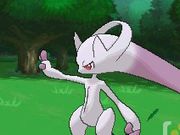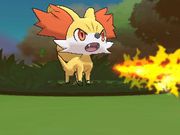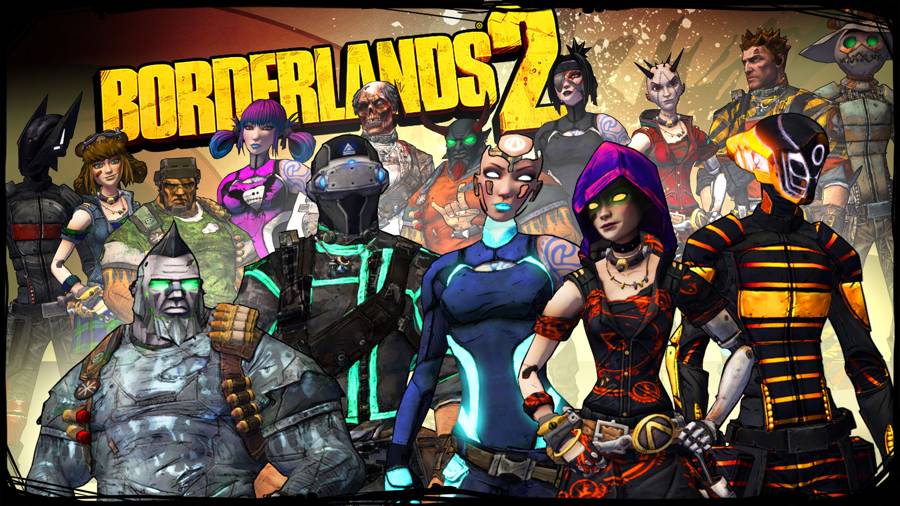



Much like the pocket monsters you’ll catch throughout X&Y’s lengthy adventures, the Pokémon series has undergone a major evolution. After 15 years and 9 pairs of core handheld Pokémon entries, developer Game Freak has abandoned the idea of refinement and reiteration, adopting a more revolutionary ethos.
If you glance, Pokémon X & Y may appear to be remarkably similar to their raft of predecessors, but look a little deeper and they manage to evoke a special kind of wonder that hasn’t existed in such purity since the Red and Blue days. X&Y recapture the feeling of adventure like Black and White seemed to forget. They retain a familiar, comfy structure that strips the games down to their bare bones and builds upon the strength of their mechanics, all the while introducing new, exciting elements that reduced me to a 10-year-old again. Magic.
Both X and Y feel like more entries confident from the off. The intro is speedy, keen to get you into the brunt of the action. There’s no hanging around for Professors to get their shit together, or waiting for 'Mom' to tell you all about the history of the world before sending you off on boring errands. Within half an hour to an hour of play, you’ve chosen your starter Pokémon – Chespin, Fennekin and Froakie make up this iteration’s Leaf, Fire and Water ‘Mon, respectively – and met a few fellow Trainers who become your first point of interaction for the game’s early hours. It’s this streamlined fat cutting that get X & Y past the nitty-gritty straight away. Both do an excellent job of keeping series veterans from becoming tired treading covered ground, and gets newcomers up to speed without overwhelming them.
The fact that the intro couples this stark increase in pace with the new visual style creates an entirely refreshed experience that epitomises Game Freak’s new focus. It’s clear from the start that the studio has innovation at the forefront of its design, and the game never lets up in creating excitement and intrigue.
Although you’ll find the majority of your adventure played from an isometric-style third-person perspective, at certain points you'll zoom in on your Trainer’s back as if you’re playing a traditional third-person adventure. When crossing over a huge bridge that leads from a regal palace to its extravagant series of gardens, the camera pans out to reveal the scale of the landscape around you. It’s 3D Pokémon, but with a tonne more visual depth than you may be expecting.
Even with lackluster 3D that never becomes essential – often actually detracting from the overall experience – Kalos is a world you want to explore. Based on France’s architectural styles, it’s vibrant and colourful, infusing its various towns with character and personality. The coffee shops have a homely warmth to them, and tinkering around with your avatar in Poké Centers introduces a previously unseen level of customisation to the proceedings. Open areas like coastlines and big expanses of countryside feel more invitingly adventurous than any Pokémon game to date, and there’s curiosity lying in every cave and cranny, waiting to be sated.
At first, things seem a bit of a doddle, and it’s easy to find yourself coasting through the first few towns without much challenge. There’s seemingly no need to invest any time in your various Pokémon, other than the few you choose to send out into battle. The introduction of a Share XP system is important in a leveling sense, and I suspect longtime fans will find a raft of things to complain about it, but it helps you ascertain a team of capable Pokémon without having to constantly switch in and out in battle. Each of your six equipped party ‘Mon receive a cut of the battle XP, so you’ll level up your crew even if you don’t send them out. It’s really useful for later on down the line, and represents just another example in the long line of Game Freak’s radical changes.
(You should note, Share XP is completely optional, so you aren’t forced into compliance.)

The difficulty soon ramps up, and the experience suddenly begins to demand more concentration and a deeper involvement. It never becomes truly difficult, and a couple of attempts at Gym leaders usually results in your glorious victory, but it’s more balanced than the first few hours. Once you’re pushed to pay more attention to battles, it all clicks. Its Pokémon become potential tools for your quest, and you develop more of a bond with the monsters in your party.
Choosing your second starter, picking between the iconic trio of Charmander, Bulbasaur and Squirtle is a truly wonderful moment, and it’s there that your journey starts proper. Every single Pokémon looks excellent, and although there are some questionably dated MIDI screeches hidden in the new and improved visual aesthetic, the overall presentation is top notch. There’s a much nicer balance between designs, too, and the fact that every single ‘Mon has been freshly rendered in 3D means that there isn’t such a noticeable disparity between the monsters you saw in 1998, and the ones you saw in Black and White 2.
From there, X&Y only continue to improve, continuously building on the way you see Pokémon. Kalos is a big place, but the introduction of roller skates and a bicycle enable you to traverse quickly across the landscape. The increased pace makes trekking between towns less arduous, and although it took me a few hours to become used to the fiddly controls when maneuvering through towns on skates, it betters the pace of the game in such a way that you couldn’t imagine going back to playing without them.
'Mega Evolution' is yet another new addition, and although these supercharged Pokémon can only be used once per battle, their inclusion is indicative of Game Freak’s direction with X & Y. There’s so much content in each title, there’s the overarching feeling that the Pokémon want to burst out of the 3DS. That said, Mega Evolution is arguably lacking in the grand scheme of what X&Y offer, where surprise is handed out so generously that it’s disappointing when you realise growing your final stage Pokémon to larger-than-life proportions is such a one-note addition. It’s a potential growing point for future installments, but not something Game Freak have capitalised on just yet.
On top of the hundreds of Pokémon to collect and Trainers to battle, dozens of towns to explore and a raft of Gym leaders to defeat, X&Y also revolutionises social interaction in Pokémon. Your bottom screen on the 3DS acts as a home for your bag, Pokédex and other tools, but also as a constantly updating menu for your friends’ activities in-game, and a history of passersby and acquaintances that you meet along the way.
All this information is fed into the trading and battling systems. You can chat with friends using the 3DS’ microphone and speaker while battling in arenas, and can use a handful of different matchmaking settings to tune the game to your preferences. This constant feed of social information transforms X&Y into entirely different experiences, where you’re pushed to break out of battling with AI trainers to fight your friends (and enemies) as well.

While the myriad options in which to interact with other players could be cumbersome, especially on a machine the size of the 3DS, Game Freak embraces the touchscreen capabilities and turns a potential flaw into a major strength, handling the online connectivity really impressively. It’s simple to jump into battle, trade and interact with anyone on your bottom screen, and keeps you entirely in touch with the world of other Trainers.
The world Game Freak has crafted here is a symbol of everything it means to be a Pokémon trainer. Like the monsters that inhabit your Pokédex, it’s full of magical secrets and evolutionary surprises that you’re left to discover on your own, but with the tools to break out of the limits of your 3DS to enter into a bustling social community of competition and trading. Thankfully, X&Y’s mega evolution looks anything but temporary.



